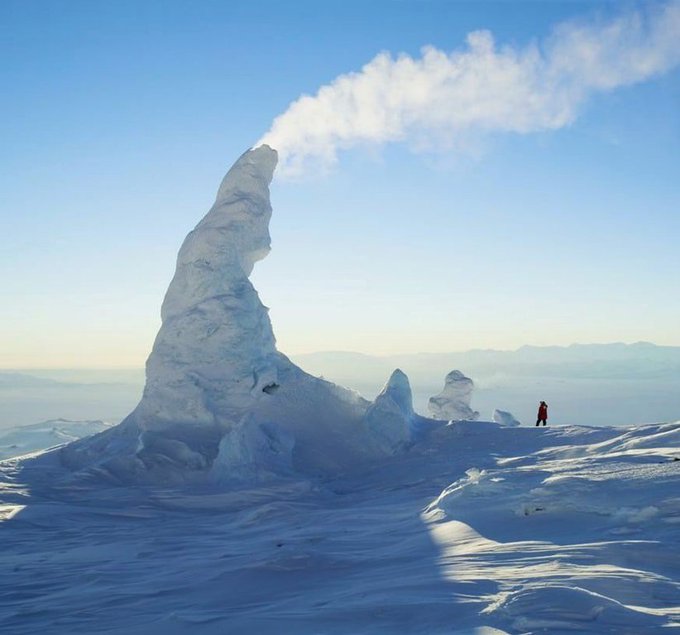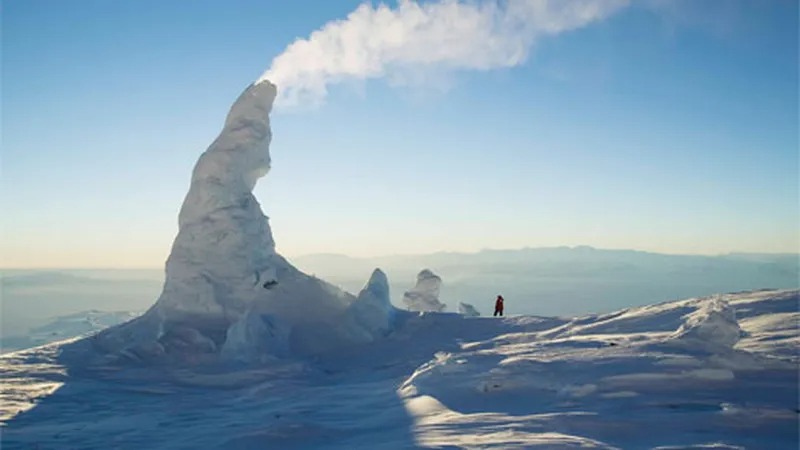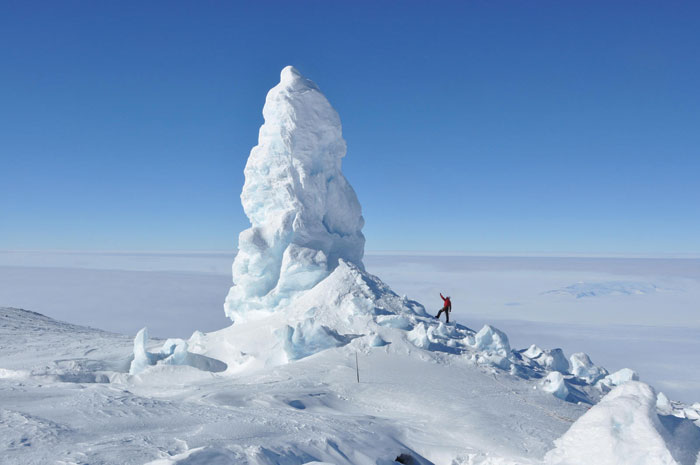
In the frozen expanse of Antarctica, a remarkable geological marvel graces the landscape – Mount Erebus. As the second-highest volcano on the continent and the southernmost active volcano on Earth, it stands as a testament to the forces that shape our planet. The incredible ice towers that form around its steaming vents create an otherworldly spectacle, captured in a stunning photograph by the talented photographer George Steinmetz.
For George Steinmetz, the allure of Mount Erebus lay in its icy formations. The volcano, in a constant state of activity, spews forth hot gases and molten lava that carve out fantastical caves and towering structures. Drawn by the tales of these surreal formations, Steinmetz embarked on an expedition to capture their essence through his lens. What he encountered was a blend of awe and challenge, as Erebus revealed both its grandeur and its dangers.

A photographer with a penchant for documenting remote and rugged landscapes, Steinmetz’s journey to Erebus was a testament to his dedication to capturing the extraordinary. His expedition, supported by the National Science Foundation, enabled him to document one of the world’s least-seen geological wonders up close. The unique lighting conditions of Antarctica’s polar summer provided the perfect backdrop for his photographic exploration.
Erebus’s slopes are adorned with ice towers, known as fumaroles, numbering in the hundreds. Emerging from the volcano’s side, these towers are a result of gas and heat melting the snowpack above, creating intricate cave systems. As steam from the caves meets the frigid air, it freezes instantly, forming towering chimneys that can reach heights of 60 feet.
While the ice towers captivated Steinmetz’s lens, scientists are equally entranced by Erebus’s inner workings. At its heart lies a lava lake, a rare phenomenon in the world of volcanology. Unlike most volcanoes, where magma remains concealed beneath layers of solid rock, Mount Erebus exposes its molten core. A swirling lake of lava, with temperatures soaring to 1,700 degrees Fahrenheit, offers researchers a unique insight into the inner workings of this enigmatic volcano.

Perched above Antarctica’s McMurdo Station, Mount Erebus watches over the continent’s main research base. Remote monitoring through various instruments and technology is a common practice, but the mountain’s unpredictable weather makes field research a formidable challenge. Scientists endure harsh conditions, with wind speeds of up to 100 miles per hour and chilling blizzards, as they gather data and insights.
Steinmetz’s adventure on Erebus offered a rare glimpse into the volcano’s fury. As he and his fellow researcher Bill McIntosh ventured to the crater’s rim, the volcano erupted, spewing lava bombs into the air. The spectacle resembled shotgun blasts, with puffs of steam marking the fiery impact of the molten projectiles.
Mount Erebus is a dynamic force, a living testament to the Earth’s inner workings. Its eruptions and ice towers paint a vivid picture of the planet’s geological processes, a reminder of the power that lies beneath its surface. While the challenges of exploring Erebus are formidable, the knowledge gained from such endeavors offers valuable insights into the Earth’s intricate mechanisms.

Intrigued by the mesmerizing spectacle of Mount Erebus and its ice towers? Delve deeper into this icy wonderland and its scientific significance by visiting the Wikipedia page: Mount Erebus Wikipedia.

Leave a Reply